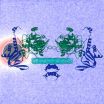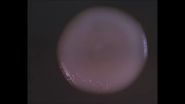(Press-News.org) People with autism spectrum disorder often experience a period of accelerated brain growth after birth. No one knows why, or whether the change is linked to any specific behavioral changes.
A new study by UCLA researchers demonstrates how, in pregnant mice, inflammation, a first line defense of the immune system, can trigger an excessive division of neural stem cells that can cause "overgrowth" in the offspring's brain.
The paper appears Oct. 9 in the online edition of the journal Stem Cell Reports.
"We have now shown that one way maternal inflammation could result in larger brains and, ultimately, autistic behavior, is through the activation of the neural stem cells that reside in the brain of all developing and adult mammals," said Dr. Harley Kornblum, the paper's senior author and a director of the Neural Stem Cell Research Center at UCLA's Semel Institute for Neuroscience and Human Behavior.
In the study, the researchers mimicked environmental factors that could activate the immune system — such as an infection or an autoimmune disorder — by injecting a pregnant mouse with a very low dose of lipopolysaccharide, a toxin found in E. coli bacteria. The researchers discovered the toxin caused an excessive production of neural stem cells and enlarged the offspring's' brains.
Neural stem cells become the major types of cells in the brain, including the neurons that process and transmit information and the glial cells that support and protect them.
Notably, the researchers found that mice with enlarged brains also displayed behaviors like those associated with autism in humans. For example, they were less likely to vocalize when they were separated from their mother as pups, were less likely to show interest in interacting with other mice, showed increased levels of anxiety and were more likely to engage in repetitive behaviors like excessive grooming.
Kornblum, who also is a professor of psychiatry, pharmacology and pediatrics at the David Geffen School of Medicine at UCLA, said there are many environmental factors that can activate a pregnant woman's immune system.
"Although it's known that maternal inflammation is a risk factor for some neurodevelopmental disorders such as autism, it's not thought to directly cause them," he said. He noted that autism is clearly a highly heritable disorder, but other, non-genetic factors clearly play a role.
The researchers also found evidence that the brain growth triggered by the immune reaction was even greater in mice with a specific genetic mutation — a lack of one copy of a tumor suppressor gene called phosphatase and tensin homolog, or PTEN. The PTEN protein normally helps prevent cells from growing and dividing too rapidly. In humans, having an abnormal version of the PTEN gene leads to very large head size or macrocephaly, a condition that also is associated with a high risk for autism.
"Autism is a complex group of disorders, with a variety of causes," Kornblum said. "Our study shows a potential way that maternal inflammation could be one of those contributing factors, even if it is not solely responsible, through interactions with known risk factors."
In addition, the team found that the proliferation of neural stem cell and brain overgrowth was stimulated by the activation of a specific molecular pathway. (A pathway is a series of actions among molecules within a cell that leads to a certain cell function.) This pathway involved the enzyme NADPH oxidase, which the UCLA researchers have previously found to be associated with neural stem cell growth.
"The discovery of these mechanisms has identified new therapeutic targets for common autism-associated risk factors," said Janel Le Belle, an associate researcher in Kornblum's lab and the paper's lead author. "The molecular pathways that are involved in these processes are ones that can be manipulated and possibly even reversed pharmacologically.
"In agreement with past clinical findings, these data add to the significant evidence that autism-associated brain alterations begin prenatally and continue to evolve after birth," she said.
Kornblum added that the findings that neural stem cell hyper-proliferation can contribute to autism-associated features may be somewhat surprising. "Autism neuropathology is primarily thought of as a dysregulation of neuronal connectivity, although the molecular and cellular means by which this occurs is not known," he said. "Therefore, our hypothesis — that one potential means by which autism may develop is through an overproduction of cells in the brain, which then results in altered connectivity — is a new way of thinking about autism etiology."
The next step, the researchers say, is to determine if and how the changes they observed lead to changes in the connections between brain cells, and if those effects can be altered after they have happened.
INFORMATION:
The study's other authors were Jantzen Sperry, Amy Ngo, Yasmin Ghochani, Dan Laks, Manuel López Aranda and Alcino Silva, all of UCLA. Support was provided by the Dr. Miriam and Sheldon G. Adelson Medical Research Foundation, Autism Speaks and the National Institutes of Health (grants P50-HD-055784 and MH65756), and other entities.
Washington, DC—A new study in human placenta provides the strongest evidence to date that Endocrine Disrupting Chemicals (EDCs) can interfere with thyroid hormone action in pregnant women. The implication is that flame retardant chemicals called polychlorinated biphenyls (PCBs) can infiltrate the placenta during pregnancy and affect thyroid hormone activity at the cellular level, according to a new study published in the Endocrine Society's Journal of Clinical Endocrinology & Metabolism (JCEM).
PCBs were used in transformers and other electrical equipment, paints, ...
Washington, DC—Exposure to cold temperatures can convert white fat tissue from the thighs and belly to beige fat that burns calories for heat, but this biological response is hampered in obese people, according to a new study published in the Endocrine Society's Journal of Clinical Endocrinology & Metabolism.
Known as brown adipose tissue (BAT), brown fat is a particular kind of fat tissue that burns energy and glucose to generate heat. Babies and small animals rely on brown fat to stay warm. Brown fat's energy expenditure helps to prevent obesity in rodents.
While ...
Researchers from the National Cancer Institute report that decaffeinated coffee drinking may benefit liver health. Results of the study published in Hepatology, a journal of the American Association for the Study of Liver Diseases, show that higher coffee consumption, regardless of caffeine content, was linked to lower levels of abnormal liver enzymes. This suggests that chemical compounds in coffee other than caffeine may help protect the liver.
Coffee consumption is highly prevalent with more than half of all Americans over 18 drinking on average three cups each day ...
CAMBRIDGE, Mass--A long-sought goal of creating particles that can emit a colorful fluorescent glow in a biological environment, and that could be precisely manipulated into position within living cells, has been achieved by a team of researchers at MIT and several other institutions. The finding is reported this week in the journal Nature Communications.
The new technology could make it possible to track the position of the nanoparticles as they move within the body or inside a cell. At the same time, the nanoparticles could be manipulated precisely by applying a magnetic ...
(SALT LAKE CITY)—A University of Utah-led study using X-rays and neutron beams has revealed the inner workings of a master switch that regulates basic cellular functions, but that also, when mutated, contributes to cancer, cardiovascular disease and other deadly disorders.
Learning more about how the Protein Kinase A (PKA) switch works will help researchers to understand cellular function and disease, according to Donald K. Blumenthal, Ph.D., associate professor of pharmacology and toxicology at the University of Utah (U of U) College of Pharmacy who led the study. ...
A supernova is the cataclysmic death of a star, but it seems its remnants shine on. Astronomers have found a pulsating, dead star beaming with the energy of about 10 million suns.
This is the brightest pulsar -- a dense stellar remnant leftover from a supernova -- ever recorded, and was seen using NASA's Nuclear Spectroscopic Telescope Array, or NuSTAR.
Lawrence Livermore LLNL researchers were involved in the design and testing of the NuSTAR X-ray optics.
"You might think of this pulsar as the 'Mighty Mouse' of stellar remnants," said Fiona Harrison, the NuSTAR principal ...
NASA's Aqua satellite passed over Super Typhoon Vongfong as it tracked through the Philippine Sea on Oct. 9. Instrument aboard Aqua captured visible and infrared images of the now Category 4 Super Typhoon.
Two instruments aboard NASA's Aqua satellite provided visible and infrared data on the Super Typhoon: The Moderate Resolution Imaging Spectroradiometer or MODIS and the Atmospheric Infrared Sounder or AIRS instrument, respectively. MODIS captured a visible image of Super Typhoon Vongfong on Oct. 9 at 04:25 UTC (12:25 a.m. EDT) that showed two concentric eyewalls with ...
Neurodevelopmental disorders such as Down syndrome and autism-spectrum disorder can have profound, lifelong effects on learning and memory, but relatively little is known about the molecular pathways affected by these diseases. A study published by Cell Press October 9th in the American Journal of Human Genetics shows that neurodevelopmental disorders caused by distinct genetic mutations produce similar molecular effects in cells, suggesting that a one-size-fits-all therapeutic approach could be effective for conditions ranging from seizures to attention-deficit hyperactivity ...
VIDEO:
Behavior experiments in which flies were given the choice between wild-type and mutant fermentation headspace in the middle of the experiment, and they migrate accordingly.
Click here for more information.
The familiar smell of beer is due in part to aroma compounds produced by common brewer's yeast. Now, researchers reporting in the Cell Press journal Cell Reports on October 9th have discovered why the yeast (formally known as S. cerevisiae) make that smell: the scent attracts ...
Oxytocin has been called the "love hormone" because it plays an important role in social behaviors, such as maternal care and pair bonding. In a study published by Cell Press on October 9th in the journal Cell, researchers uncover oxytocin-responsive brain cells that are necessary for female social interest in male mice during estrus—the sexually receptive phase of their cycle. These neurons, found in the prefrontal cortex, may play a role in other oxytocin-related social behaviors such as intimacy, love, or mother-child bonding.
"Our findings suggest that social ...

